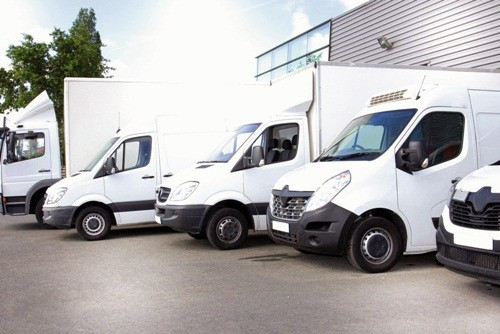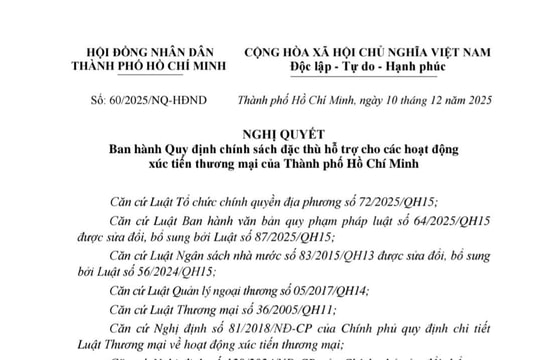On February 14th, 2017, the Prime Minister issued the Decision no.200/2017/QD-TTg on approving the Action Plan to Improve Competitiveness and Develop Vietnam’s Logistics Services to 2025. This is the first time we have an action plan of national level on developing the logistics service industry comprehensively. One of the specific targets set in the Action Plan is to reduce the logistics cost to approximately 16%-20% equivalent to GDP.
Where did “the number 20.9% as of GDP” come from? So far, we have had difficulties in totaling logistics costs. Besides the World Bank’s report delivered in March, 2014 on “Consulting services: Support to Ministry of Transport on Developing Multi-Modal Transport” by ALG, there have been no official reports on Vietnam’s logistics costs. According to WB’s report, “Vietnam’s national logistics costs corresponding to all national value-added productive sectors represent VND 413,141bn. This figure represents 20.9% of the total national GDP (VND 1,980,914bn in 2010). It is true that 20.9% is high cost level if we compare with U.S, Japan or Western European countries. However, it is true that if we compare with other countries of the same GDP as Vietnam‘s it is actually not a bad result.” “This can be easily understood when observing the WB’s Logistics Performance Index (LPI) values”.
ALG calculated particular logistics costs for 12 commodities including electronics, electric equipment & components, textile, automobile, pharmaceuticals, vegetable and fruits, footwear, seafood, rice, coffee, beverages and furniture. Then, they interpolated estimation and drew a conclusion that Vietnam’s national logistics cost corresponding with local value added productive sectors. Logistics cost in average (each product details was different) included transport cost of 60%- transport (59%) and port charge (1%); inventory cost and administration costs of 40%- storage (11%), handling (21%), packing (8%). The calculation is similar to those of the U.S, Western European countries, Japan and Thailand.…

ALG’s report also gave a specific number on proportion of logistics costs in production costs: electronics 1.2%; electric equipment & components 3.5%; textile 9.3%; automobile 2%; pharmaceuticals 0.3%; fruits and vegetables 29.5%; footwear 11.7%, seafood 12.2%; rice 29.8%; coffee 9.5%; beverages 19.8%; furniture 22.8%. Logistics costs calculated on 12 product sectors was 10.85%, excluding 10.70% of pharmaceuticals and beverages sectors.
The percentage proportion of logistics costs equivalent to GDP depends on the total logistics costs and total GDP. In 2018, Vietnam GDP was VND 5,545.3bndouble that of 2011. Therefore, the GDP of 2018 was double the GDP of 2010 (VND 1,980.9bn) that ALG used to calculate.
Currently, Vietnam’s export structure has changed. There is an increase in electronics exported. In 2019, there are 29 commodities with export turn-over of over USD 1bn, accounting for 91.7% of the total export turnover. It is noticed that 9 commodities reached USD 5bn and 5 commodities reached over USD 10bn: phones and spare parts USD 50bn; textile USD 30.4bn (USD 11.2bn in 2010); electric goods, computer and spare parts USD29.4bn; footwear USD 16.3bn; aqua products USD 8.8bn (USD 4.9bn in 2010); fruits and vegetables USD 3.8bn; coffee USD 3.5bn. It is obvious that there have been large changes in logistics costs.
When comparing logistics costs of 10 out 12 product sectors researched in ALG report in 2010 and updating data in 2018, it can be seen that when sector structure changes, logistic costs changes correspondently: logistics costs reduced from 10.7% to 8.74% for 10 product sectors. (see the Table in the Vietnamese version).
In 2018, Vietnam’s LPI was 39/160, a remarkable advancement compared to the rank of 53/160 in 2010, ranking the third in ASEAN countries, after Singapore and Thailand. It can be seen that Vietnam’s logistics costs have been largely improved. In line with ALG’s calculation, Vietnam Logistics Business Association (VLA) calculated that Vietnam logistics cost in 2017 was 14.5%-19.2% equivalent to GDP. The average figure currently is around 16%-17% (Page 59, VLA’s Whitebook 2018). This figure is worth credible.

Developed countries and the countries in the region calculate and announce their national logistics costs annually, which help the management and development of their logistics service industry. Some international research organizations such as Armstrong& Associates, Inc. (the U.S) have the annual research and announcement of the main countries’ logistics costs based on their official announcements. According to the Company’s report in February 2018, the U.S had the logistics cost of 8.2%, China 14.5%, Malaysia 13%, the Philippines 13%, Thailand 15% and Singapore 8.5%. Thailand in its logistics development strategy in 2007-2011 set a target of reducing logistics costs from 19% in 2005 to 16% in 2011 and to 15% in 2017. It is noticeable to us.
Direction no.21/CT-TTg dated July 18th, 2018 on Implementing Solutions to Reduce Logistics Costs, Effectively Connecting Transport Infrastructures assigned the Ministry of Planning and Investment to set up a system for statistic index and collection of statistic data on logistics. It is a high time when relating State’s Agencies such as the Ministry of Planning and Investment and the Ministry of Industry and Trade officially announce Vietnam’s logistics costs annually in order to have effective management and development of the logistics service industry, a sector bringing about high added value to the economy and particularly the country’s importation and exportation of goods and for everyone to have right understanding about Vietnam’s logistics costs.



.png)




.png)

.png)



.png)
.png)
